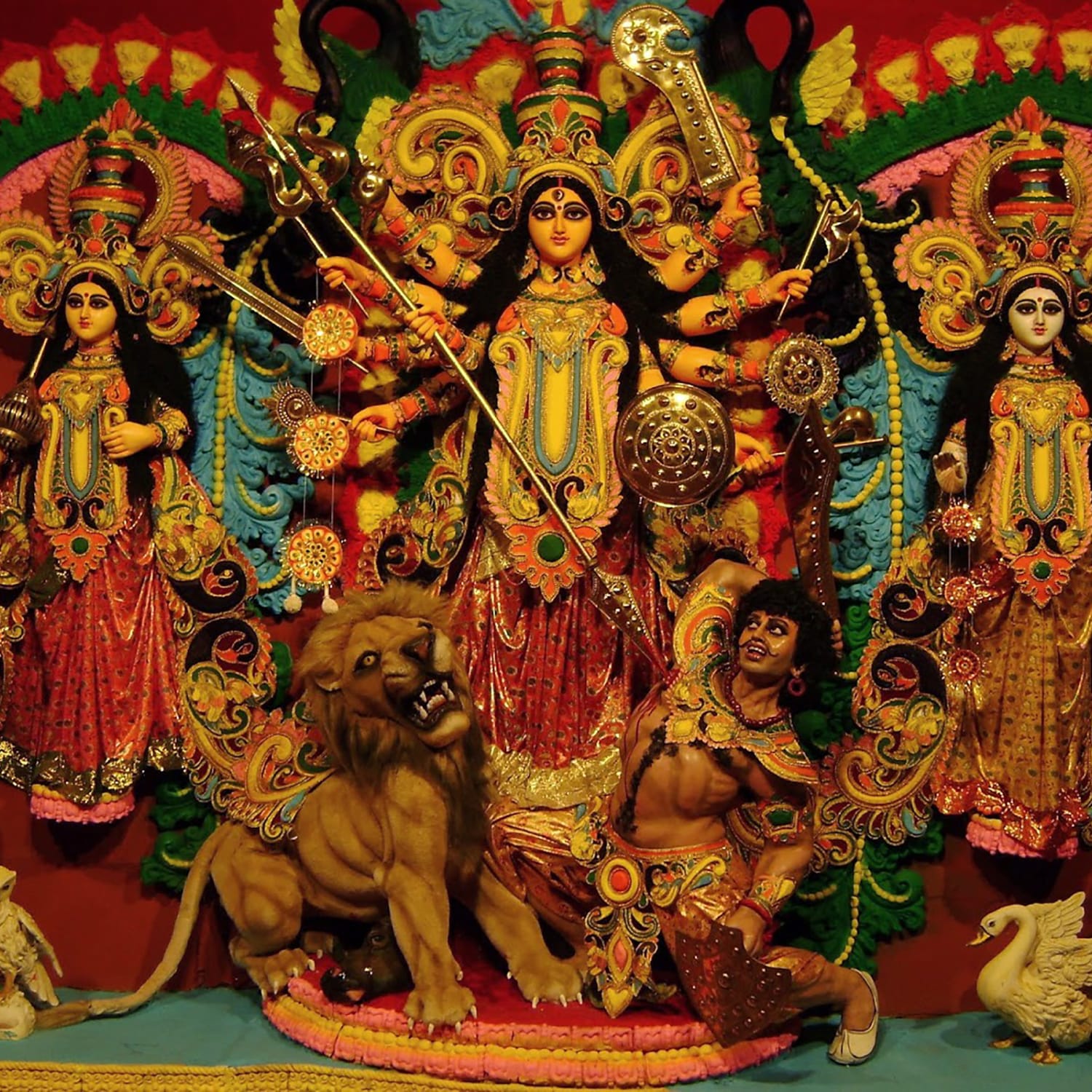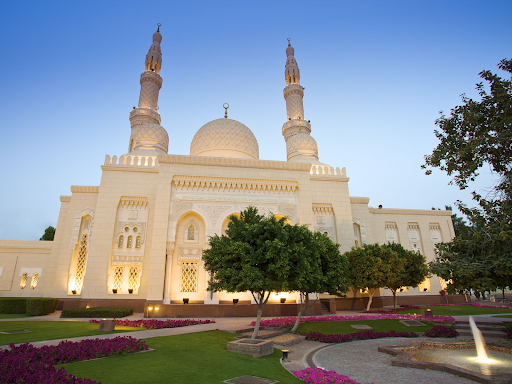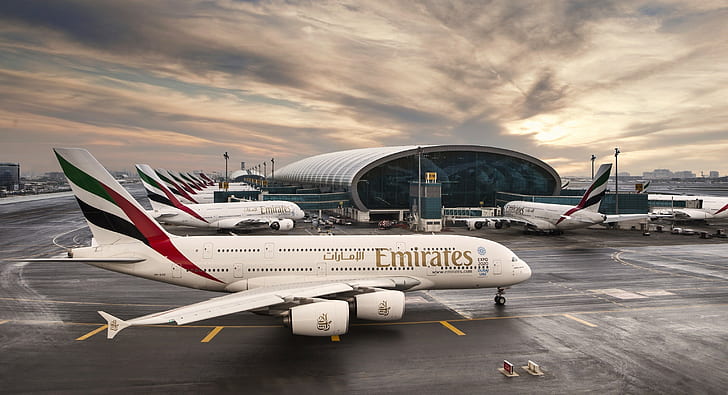Maa Vaishno Devi, Jammu
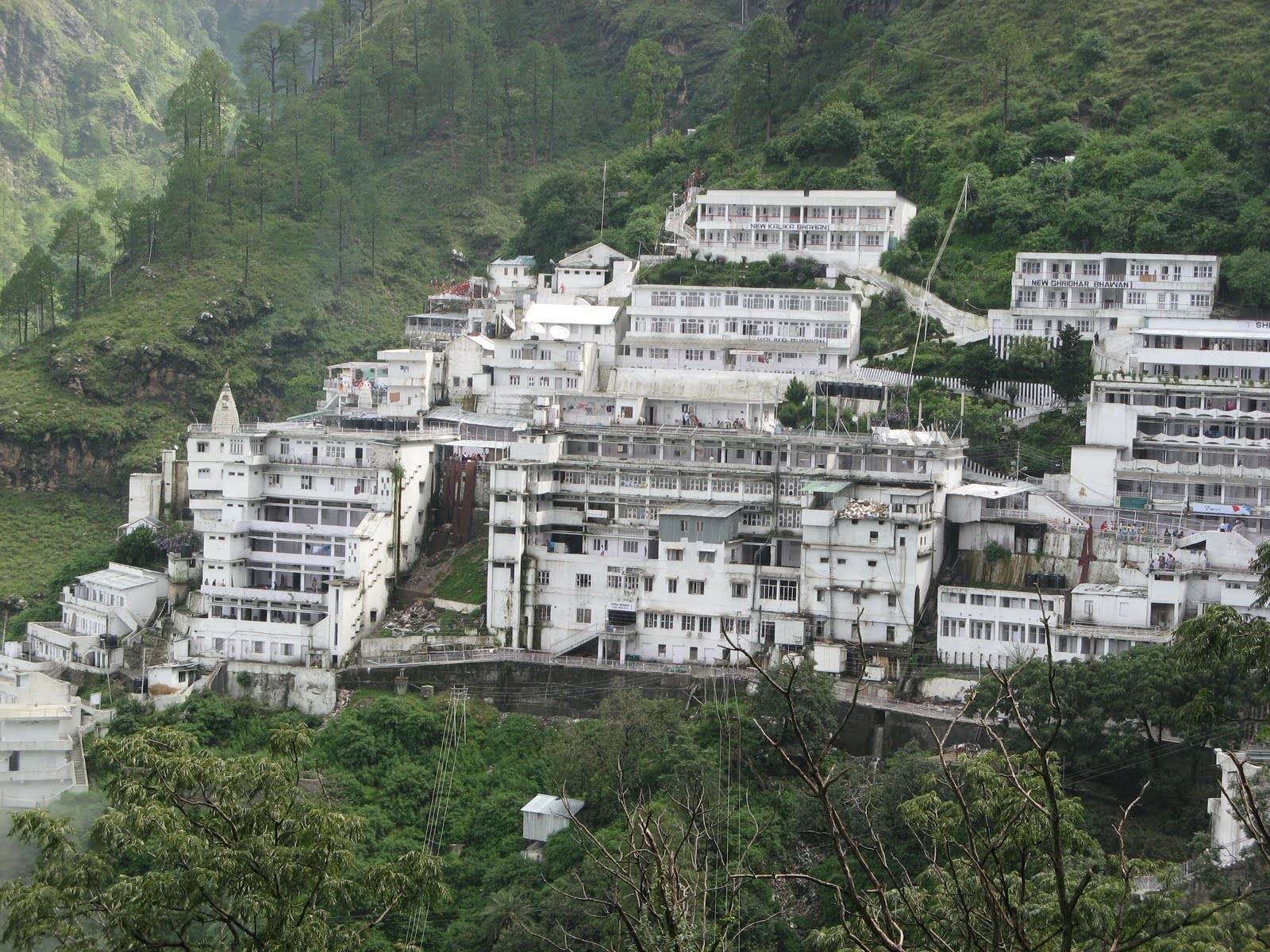
One of the most revered and visited pilgrimage sites in India, Vaishno Devi is located in the scenic Truikuta Mountains. The temple is dedicated to Mahalakshmi, who is depicted in a deitical form as Vaishno Devi. Visiting Vaishno Devi during Navaratri is considered to be especially auspicious and this year, around 3 lakh devotees are expected to visit the temple during this festival. During the nine days of the festival, the Jammu & Kashmir State Tourism Department organises Navratri Festival to showcase the religious traditions and culture of the region.
Kanaka Durga temple, Vijayawada
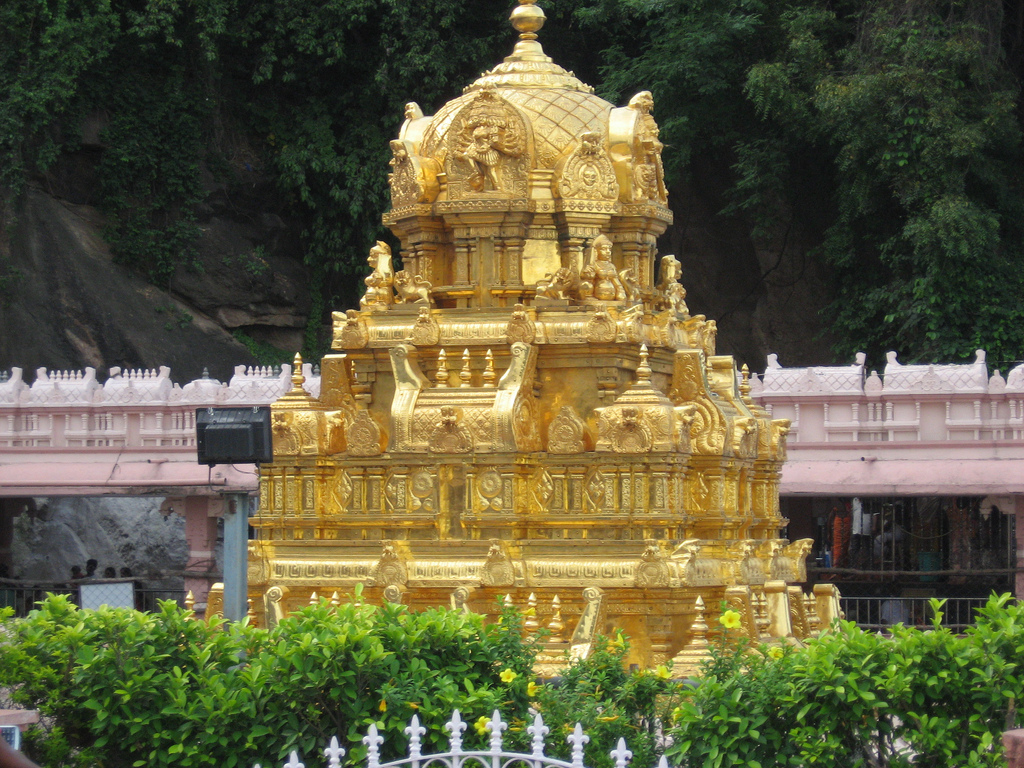
Located on the banks of Krishna River, this is a Swayambhu (self-manifested) shrine and the second largest temple in Andhra Pradesh. The 4-foot-high (1.2 m) deity is decked in glittering ornaments and bright flowers. She is shown holding a powerful weapon in each of her eight hands and piercing the demon Mahishashura with a trident. During Navratri, the priests perform special Saraswati puja and Theppotsavam in the temple.
Naina Devi Temple, Bilaspur
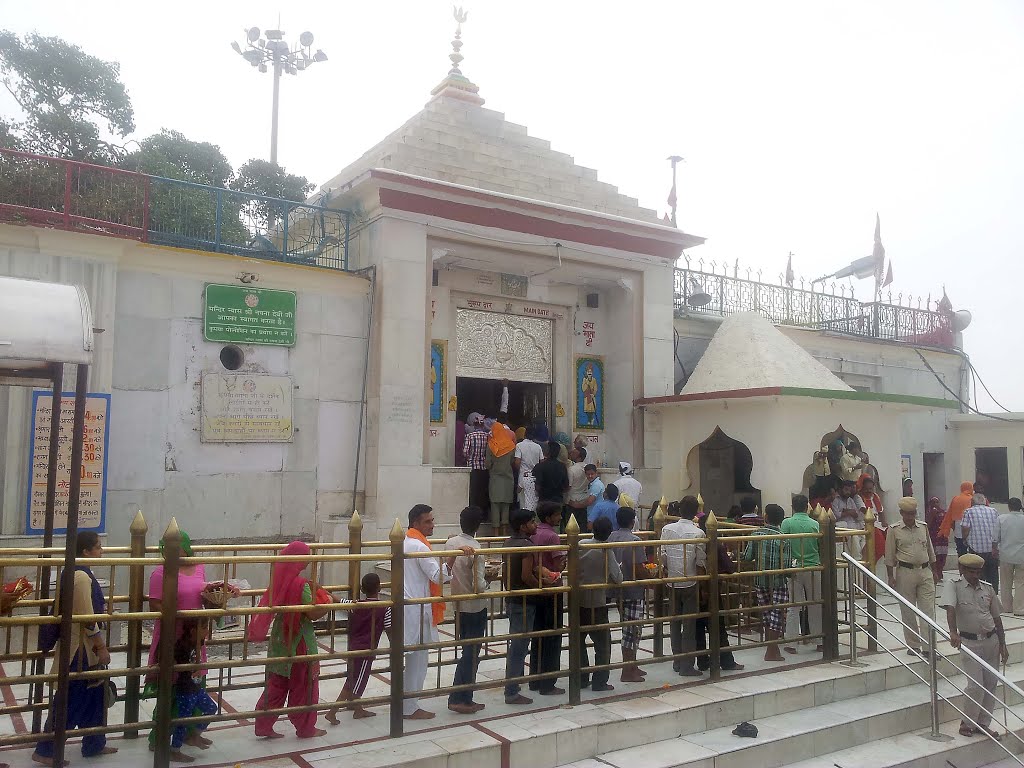
Located in Bilaspur, this is a famous Durga temple featuring three idols : Maha Kali, Naina of Sati and Ganesha. It is one of the most important Shakti Peeths in India and attracts thousands of devotees every year. The temple is located atop a hill and offers panoramic view of Gobind Sagar lake and the town of Anandpur Sahib. It is believed to have been built on the spot where Sati’s eyes fell when Vishnu unleashed his Chakra and cut her body into fifty one pieces to save the Earth from Shiva’s wrath. The temple sees the highest number of pilgrims during festivals of Navaratri, Shravan and Chaitra.
Kamakhya Temple, Guwahati
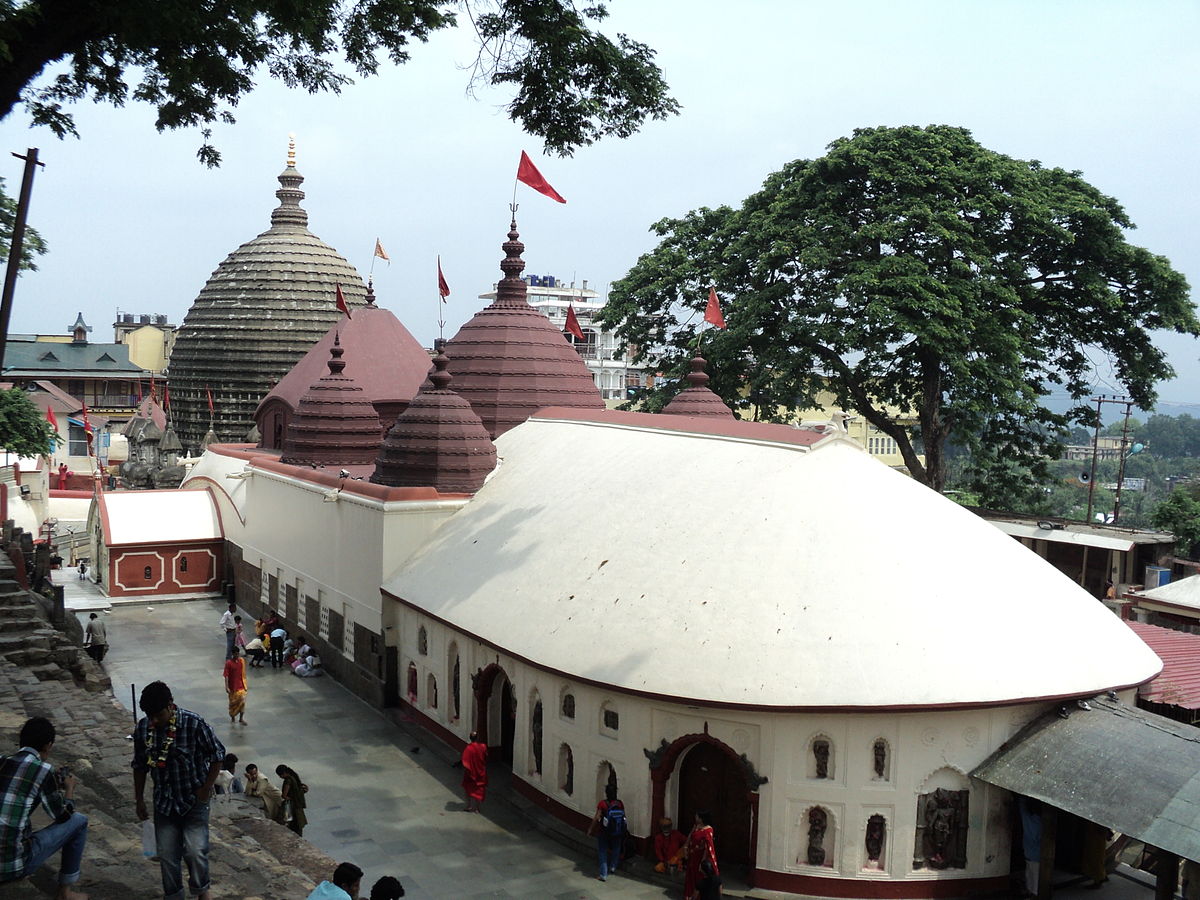
Considered to be one of the oldest shakti peeths in India, this temple is located at the peak of Nilanchal Parvat in Guwahati. There is no idol or image of the Devi in the temple, instead there is sculptured image of the yoni of the goddess, which is the object of worship and reverence. According to legend, it was the spot where Sati’s yoni fell after Shiva danced with the corpse of Sati. This Durga temple attracts thousands of visitors during the five-day Navaratri festival.
Chamundeshwari Temple, Mysore
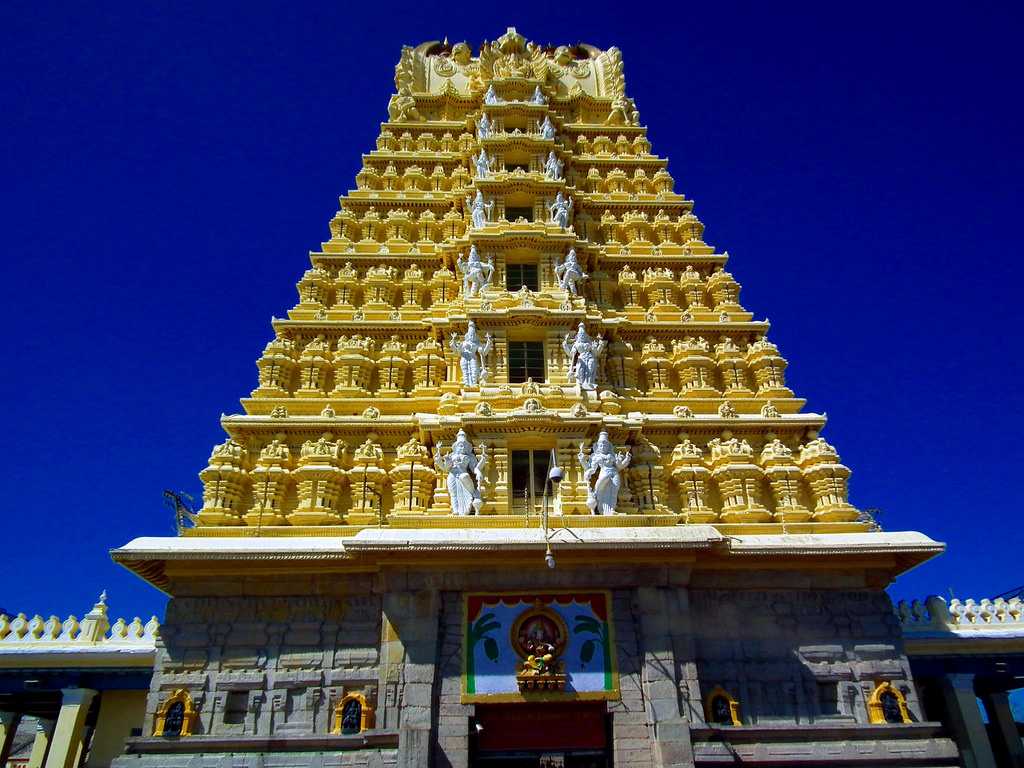
Set atop the Chamundi Hills in Mysore, this temple is believed to be built in the 12th century by Hoysala rulers. It is considered to be a Shakti Peetha and one among the 18 Maha Shakti Peethas. The chief deity is Chamundeshwari or Durga, the fierce form of Shakti, however, there are several images of Nandi (the bull mount of Shiva) along with a huge granite Nandi sculpture in the vicinity of the temple. During Navratri, thousands of devotees visit this Durga temple to offer prayers and conduct special poojas and abhishekas (holy bath to the Goddess).
Dakshineswar Temple, Kolkata
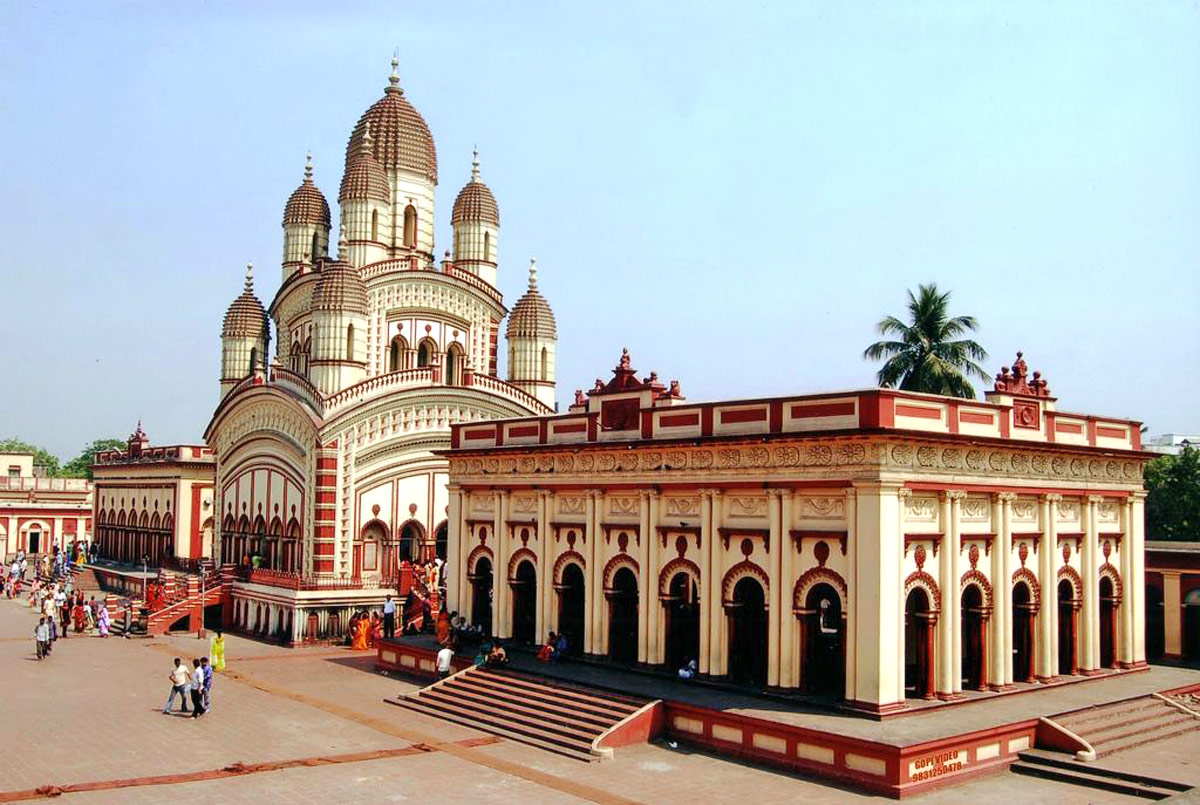
This is a serene and tranquil temple located on the banks of the Hooghly River. It is one of the most visited temples in Kolkata and was founded in the 19th century by philanthropist Rani Rashmoni. The main deity of Mother Kali is housed in a nine-spired temple in the center of the main courtyard. The basalt figure is covered in gold brocade and stands on a white marble statue of a prostrate Shiva. Visitors can also take a boat to visit the Belur Math.
Karni Mata Temple, Deshnok
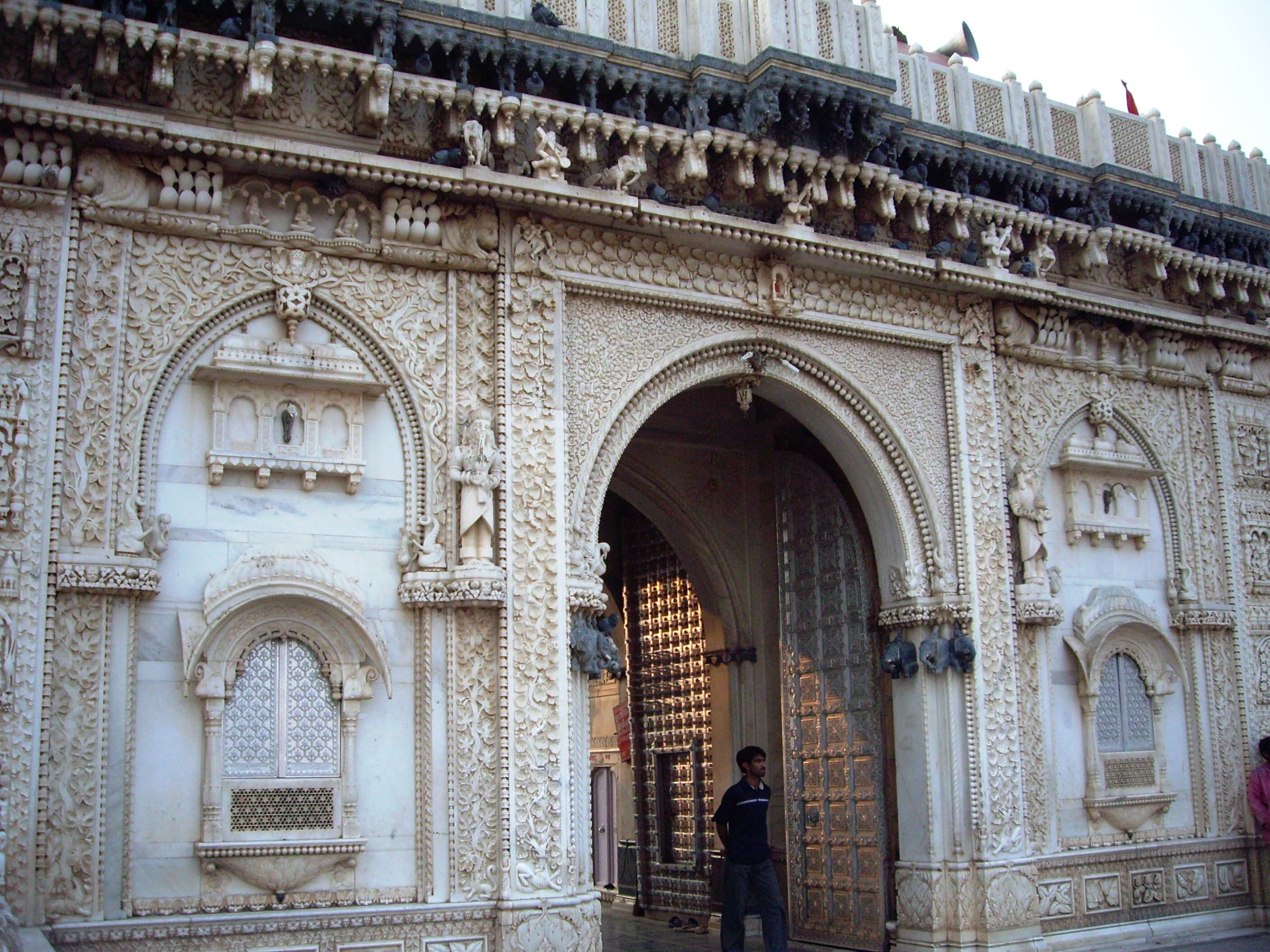
This is a popular and unusual temple located in the tiny town of Deshnok, around 30 km from Bikaner in Rajasthan. It was built sometime in the 15th century and features a striking facade that is wholly built in marble. The temple is dedicated to Goddess Karni, who is regarded as the incarnation of Maa Durga. The ‘unusual’ factor is rendered by 20,000 odd rats (kabas) that are fed, protected and worshipped in this place . It is considered auspicious if a rat runs across one’s feet. A glimpse of a white rat is considered to be especially promising and fruitful. The main shrine has the image of the goddess holding a trishul (trident) in one of her hands and surrounded by rats. During Navratri, thousands of devotees travel to this Durga temple by foot to pay homage to the goddess.

